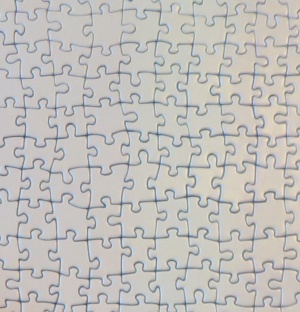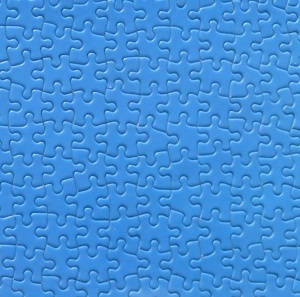| Es gibt z.Z. Probleme mit einem Update, es ist nur Lesen möglich. Currently there are issues with the installation, readonly possible for now. |
Press cut
| Language: | English • Deutsch |
|---|
General information
The cutting of a jigsaw is called punching. The first puzzles made of plywood were cut with a jigsaw. In the mass production one uses stencils from knives, which punch the puzzles. Other manufacturing methods use laser or waterjet techniques.
A demonstrative video about the production of a punching sheet has been published by the "Sendung mit der Maus".
Kind of press cuts
There are different types of cut patterns, the most common form of cutting is grid or raster punching.
Grid punching
In the case of a grid punching, the individual pieces lie as in a checkerboard pattern in which the edges of the individual panels have been provided with notches or bulges. Each edge of a piece touches only one edge of another piece.
This is the most common form of punching from manufacturers such as Ravensburger, Schmidt or Clementoni.
The size of the individual pieces nevertheless varies, since the alignment on a uniform grid is not exactly given. You can also determine partially how the position of a single piece is located: horizontal or vertical.
A determination of the total number of pieces of a puzzle is possible by counting the edge pieces horizontally and vertically and multiplying both.
Strip punching
In contrast to a grid punching, the individual pieces of a strip punching are not exactly opposite each other, so that more than one piece is connected to one side of a piece. The rows or columns of pieces are in stripes.
These strips can be both horizontal and vertical.
This punch was common in older puzzles of MB.
The total number of edge pieces can be determined as in the case of a grid punching.

